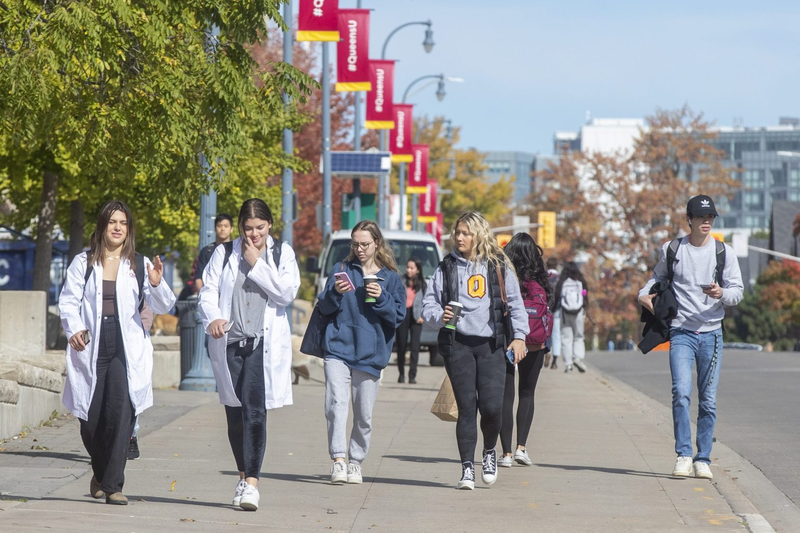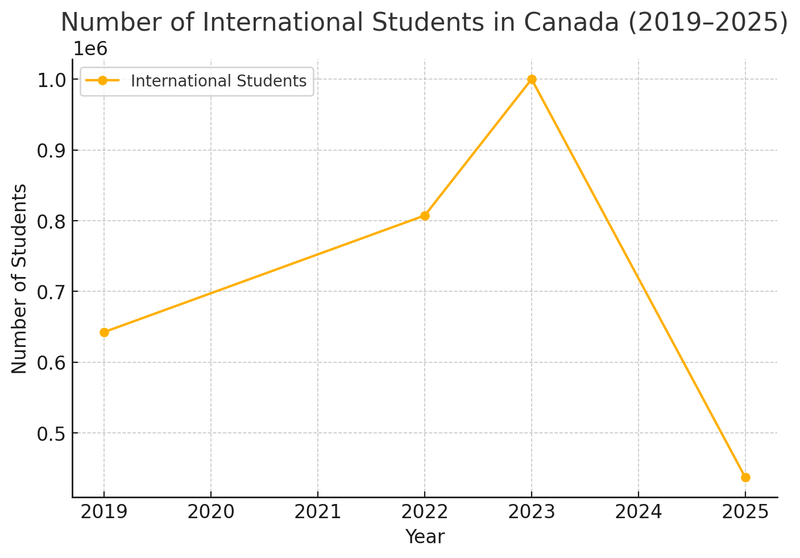Losing its Appeal to Foreign Students, Universities in Canada facing a predicament
Input
Modified
Canada's higher education institutions are facing significant challenges as the international student market, a critical revenue stream for many universities, suffers a series of setbacks. The financial fallout and no-show epidemic hits Canadian universities as many international students are considering other options such as the UK and US. Canada has lost its global appeal to many international students as they are searching for better prospects elsewhere.
International students, who contribute billions to Canada's economy, have become an essential pillar of the country's post-secondary education sector. However, a combination of bureaucratic hurdles, inflationary pressures, and shifting immigration policies is leading to alarming drops in enrollment and a record number of no-shows this fall. Apart from it being revenue-generating to Canadian universities, international students bring a wide array of benefits to Canadian society, economy, and educational system. Their presence is a cornerstone of Canada’s global reputation as a hub for quality education and multiculturalism. It also helps address skill gaps in Canada’s workforce, contributing to the country’s economic growth and innovation.

A Financial Crisis for Canadian Universities
International students, who traditionally account for a substantial portion of tuition revenue, are now proving to be a double-edged sword for Canadian universities. According to a report from University Affairs, the fallout from a decline in international student arrivals is hitting university budgets hard, especially at institutions that rely heavily on these students' tuition fees to balance their finances. Canadian universities have seen rising costs and have been forced to rethink their financial strategies in the face of declining numbers of international students.
These students contribute nearly $6.9 billion to Canada's economy annually, with many institutions receiving a large share of their tuition revenue from this demographic. The financial loss is particularly significant for universities with large international student populations, which rely on these funds to maintain and expand operations.
But beyond the numbers, the problem is also reflective of a larger issue in Canada's immigration and education systems. A CBC News article sheds light on some of the reasons why students are either deferring their studies or abandoning their plans to study in Canada altogether. Increased inflation and the cost of living have made it much more difficult for international students to afford their education in Canada, while stricter visa processes and delays in immigration approvals have caused uncertainty for many students. These factors have led to a phenomenon where students are simply not showing up for classes as expected.
The situation has been compounded by an alarming number of no-shows, which were recently reported by The PIE News. In just two months, nearly 50,000 international students across Canada have failed to arrive at their respective institutions, leaving schools scrambling to adjust. This issue is not just a small blip in the system; it signals a worrying trend for universities that rely on international enrollments for both revenue and diversity.
For many students, the decision to study abroad is a complex one that involves considerable time, financial investment, and effort. As inflation has risen globally, many students have been unable to afford their original plans to study in Canada, while some may have opted for more affordable or less restrictive options in other countries. Compounding these economic concerns are delays and complications in Canada’s immigration and visa processes. The complexity and uncertainty surrounding visa approvals have left many international students in limbo, preventing them from securing necessary documentation in time for the fall semester.

Policy Changes and Immigration Delays
The Canadian government's focus on international students has been largely positive over the past few years, with initiatives aimed at attracting global talent to bolster the country’s economy. However, there have been some notable shifts in immigration policies that are beginning to raise concerns among prospective international students.
One significant challenge is the increased scrutiny of study permits, which has led to delays in visa processing times. A CBC article highlights how these delays have made it increasingly difficult for students to arrive in Canada on time, resulting in a situation where many students are forced to defer their plans or cancel them altogether.
In addition, the financial burden on international students has also been exacerbated by the rise in tuition fees and living costs. While Canadian universities have long been considered an attractive destination for international education due to their quality and relatively affordable tuition rates compared to the US and the UK, these advantages are being undermined as inflation impacts everything from accommodation to transportation.

The Way Forward: Addressing the Crisis
With many Canadian universities grappling with these challenges, questions are being raised about how they will recover from this crisis. As the number of international student no-shows continues to grow, the long-term financial stability of these institutions is at risk. University administrators and policymakers must come together to find solutions that can support international students in a time of growing uncertainty.
Financial Aid and Support: More financial assistance and scholarships targeted at international students could be a crucial way to alleviate the financial pressures students face. Additionally, universities should consider implementing more flexible payment options and offering greater support for students in navigating visa and immigration processes.
Streamlining Visa Processing: Streamlining and expediting visa processes for international students should be a priority. As it stands, the delays in processing times are a key barrier to students making the decision to study in Canada. Faster approvals would not only help to restore confidence among international students but also ensure they can arrive in time for the start of their academic terms.
Addressing Cost of Living: Universities may also need to partner with local governments and organizations to help mitigate the rising cost of living. Offering more affordable housing options, transportation subsidies, or even meal plans could help ease some of the financial burdens that are currently deterring students from coming to Canada.
In the coming months, Canadian institutions will need to adapt quickly to the changing landscape of international education. If they fail to respond effectively to these challenges, the impact on their finances, academic diversity, and global reputation could be profound. However, with thoughtful policy adjustments and increased support for international students, Canada’s universities have the potential to not only recover but thrive in an increasingly competitive international education market.





















